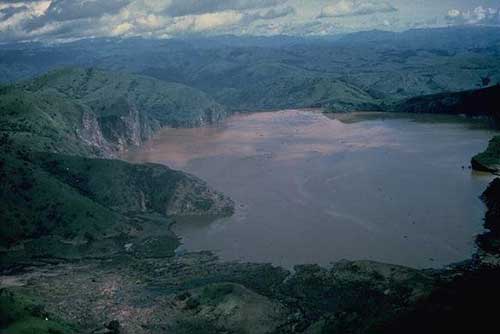On August 21, 1986, disaster struck at Lake Nyos, located in the Northwest Region of Cameroon, Africa. Locally known as ‘The Bad Lake‘, ‘The Deadliest Lake‘ there were always stories floating around about an evil spirit within the lake who emerged to kill everyone around. No one could have predicted how true that would ring until a natural disaster suffocated over 1746 people overnight.
According to Atlas Obscura, Lake Nyos has formed in a volcanic crater around 400 years ago. These kinds of lakes are formed by the volcanic activity happening deep beneath them, and therefore have high levels of CO2. Usually, this gas is released over time as the lake water turns over.

It ended up storing the gas rather than releasing it until more than five gallons of CO2 were dissolved in every gallon of water, and the lake was bursting at the seams.
On August 21, 1986, Lake Nyos exploded, sending a fountain of water over 300 feet into the air and creating a small tsunami.
It also released 1.2 cubic kilometers of deadly CO2 in 20 seconds. Only 6 out of 800 residents nearby survived in the immediate aftermath. 1746 people died in total.
As the CO2 settled, every flame and fire immediately went out. Even people 25 km away were killed. Those who exited their homes to investigate were consumed by a cloud of gas and died immediately.
The gas settled on the ground, killing those who were asleep but leaving those standing up unaffected.
The villages of Nyos, Kam, Cha, and Subum were pretty much wiped out, and over 3500 livestock animals died within minutes.
The color of the lake went from a clear blue to a deep red, due to the iron churning up from below. Since this catastrophe, a pipe has been installed allowing the gas to escape at a regular rate. However, CO2 levels are higher than what they were in 1986, and a natural dam on the lake might also be failing. If that happens, there would be both flooding and gassing simultaneously.

